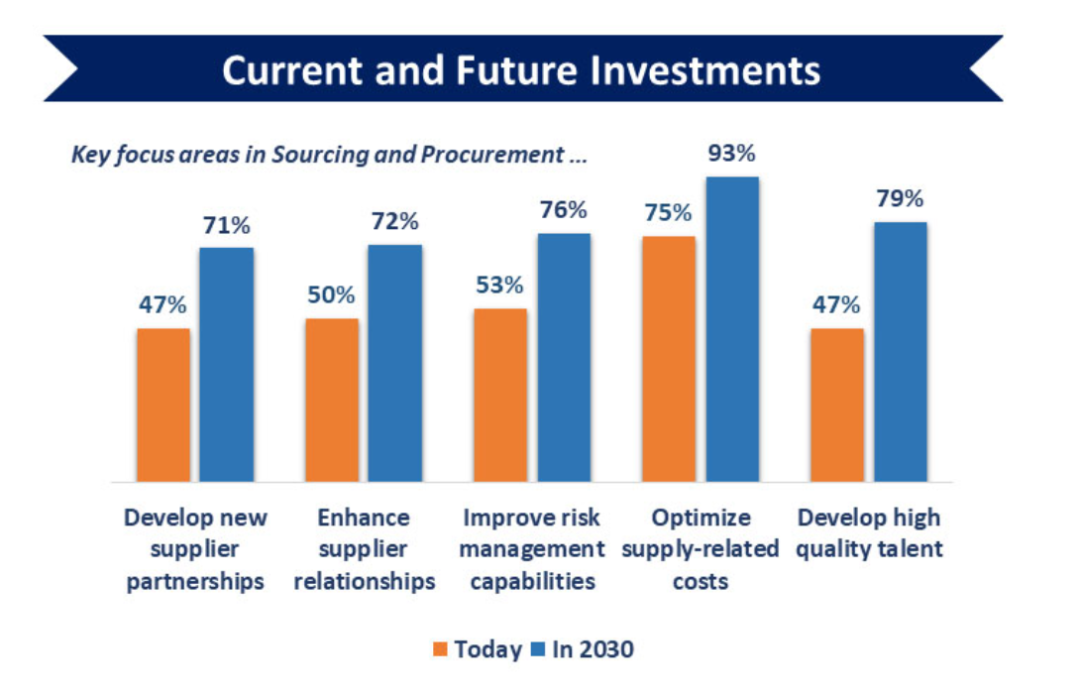From controlling cost to ensuring supply: inbound supply chain’s focus shifts, says research report
Annual “Logistics 2030” study from Auburn University shows companies reeling from transportation delays and supply shortages.

Tightening supply and capacity constraints are rearranging companies’ priorities for their inbound supply chain operations, according to a research report released today at the Council of Supply Chain Management Professionals (CSCMP) EDGE conference.
While controlling costs still remains important to most sourcing and inbound logistics organizations, their top priority is now shifting toward ensuring uninterrupted supply, according to the third installment of the multiyear “Logistics 2030—Navigating a Disruptive Decade” study.
Produced by researchers at Auburn University’s Center for Supply Chain Innovation, the study uses surveys, focus groups, and research to investigate the challenges facing supply chain organizations during the 2020s. Each year, the study focuses on a different area of the supply chain, with this year’s edition addressing strategic sourcing and inbound logistics.
Sourcing’s shifting focus
On the sourcing end, rising demand and constrained supply has sourcing and procurement professionals reassessing their long-held focus on driving down costs. Not so long ago, companies pursued a policy of single sourcing in an attempt to reduce product variation, speed up the contracting process, and lower administrative costs. Now, 67% of survey respondents see increasing sourcing flexibility—or the ability to quickly and easily switch from one supplier to another—as one of the big areas of focus for the 2020s.
One focus-group participant said, “Maybe the model ahead is one where there’s an affordable level of contingency planning around local sources that results in security of supply and affirmation of supply.” Indeed, 80% of survey respondents anticipate that domestic sourcing will increase in the next 10 years.
Survey respondents also anticipate that companies will take a more robust approach to supplier relationship management. More than 70% of survey respondents say they expect that developing new supplier partnerships will be a key focus area for sourcing and procurement in 2030, up significantly from the 47% who say it is a priority today. Likewise, 50% of respondents say that enhancing supplier relationships is a key focus area for their sourcing and procurement departments today, but 72% expect this to be a priority by 2030. The tactics used for supplier relationship management will also shift. Today, less than 40% of respondent embed a company representative with suppliers. By 2030, that number should increase to more than 60%, according to survey respondents.
Inbound logistics under stress
Even after securing key components and supply, companies face numerous obstacles before they get those materials in hand. All aspects of the logistics network are currently besieged by capacity constraints, congestion, declining service, skyrocketing rates, and labor shortages. And “Logistics 2030” survey respondents don’t anticipate that these problems will dissipate any time soon. Instead, they expect that their top three concerns leading up to 2030 will remain workforce availability (81%), inbound capacity constraints (70%), and volatile freight rates (65%).
It’s perhaps not surprising then that 89% of survey respondents report that their company now consider inbound logistics to be an organizational priority. As a result, 77% of respondents expect to see an increase in corporate funding and resources to manage and monitor their transportation and logistics partners.
Respondents indicate that they are pursing a variety of strategies to deal with these logistics stressors, including consolidating shipments (83% of survey respondents), building long-term partnerships with transportation carriers (82%), and investing in warehouse automation (73%).
While it may be tempting to blame the Covid-19 pandemic for the shift in strategic focus found by the report, there are a lot more factors at play, says the lead author Rafay Ishfaq, associate professor of supply chain management at Auburn University. “I think there are a number of long-term trends, especially around global sourcing, capacity, and infrastructure that transcend recent supply chain dynamics,” says Ishfaq. “Certainly, Covid accelerated these trends and ruptured the underlying fissures; which makes this year’s study all the more interesting.”
This year’s research was based on more than 275 survey responses and six focus groups. Half of the participants work for companies with revenues over $1 billion. In addition to Auburn University, the research is supported by the industry associations Council of Supply Chain Management Professionals and NASSTRAC as well as Agile Business Media (which publishes DC Velocity and CSCMP's Supply Chain Quarterly), and the global consulting company KPMG. The report can be purchased on the CSCMP website for $25. It is free for members.
Copyright ©2024. All Rights ReservedDesign, CMS, Hosting & Web Development :: ePublishing